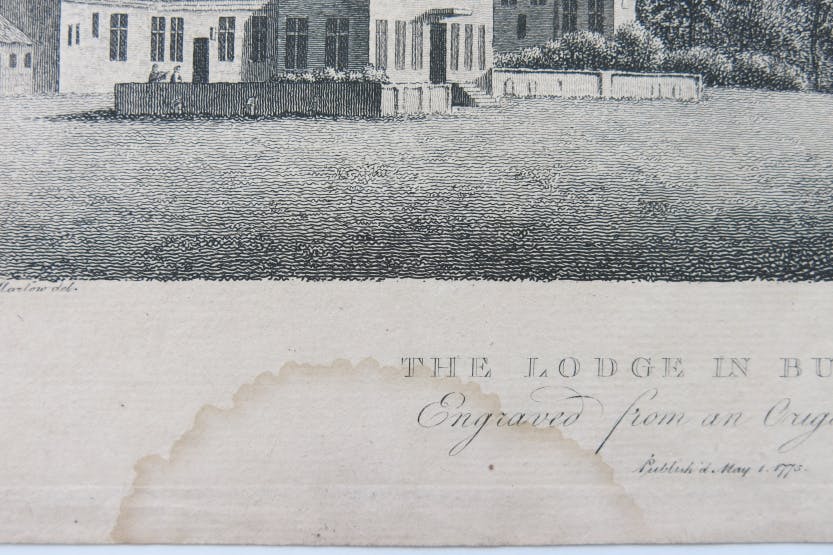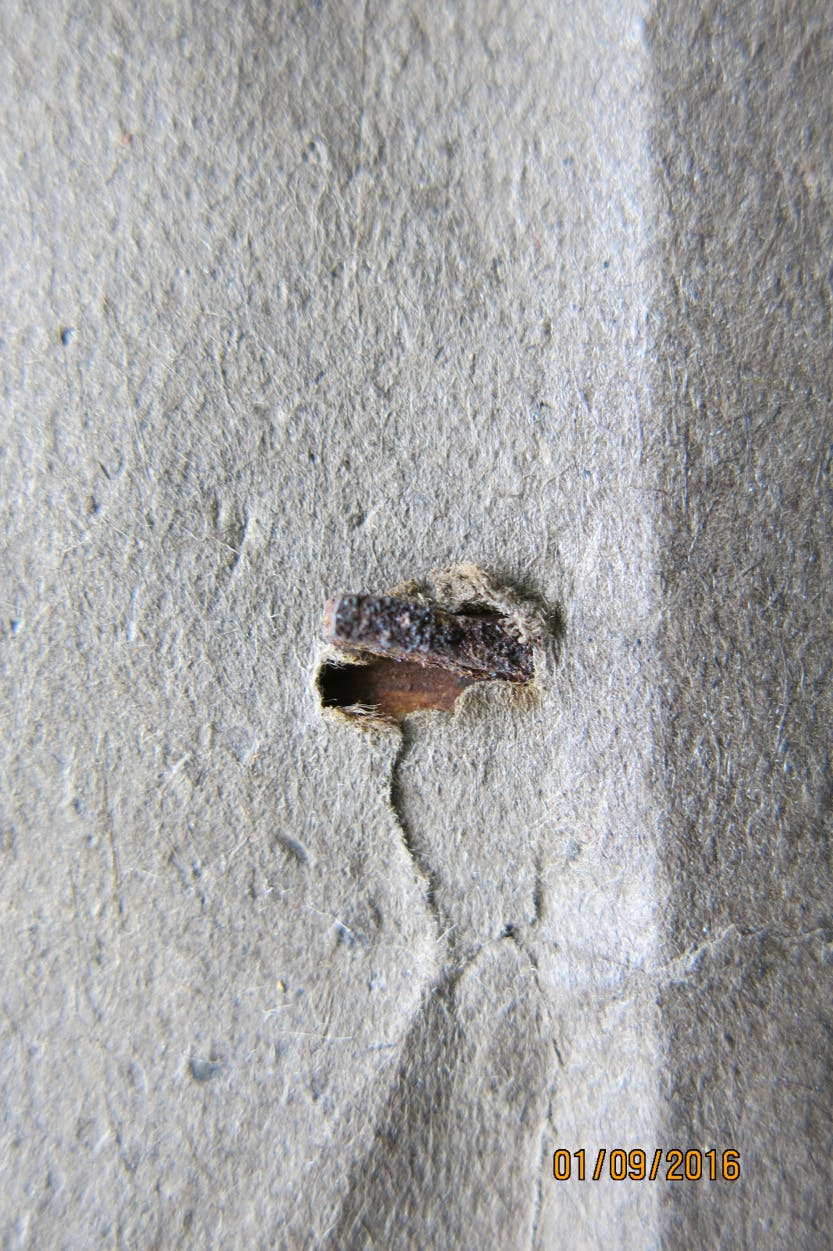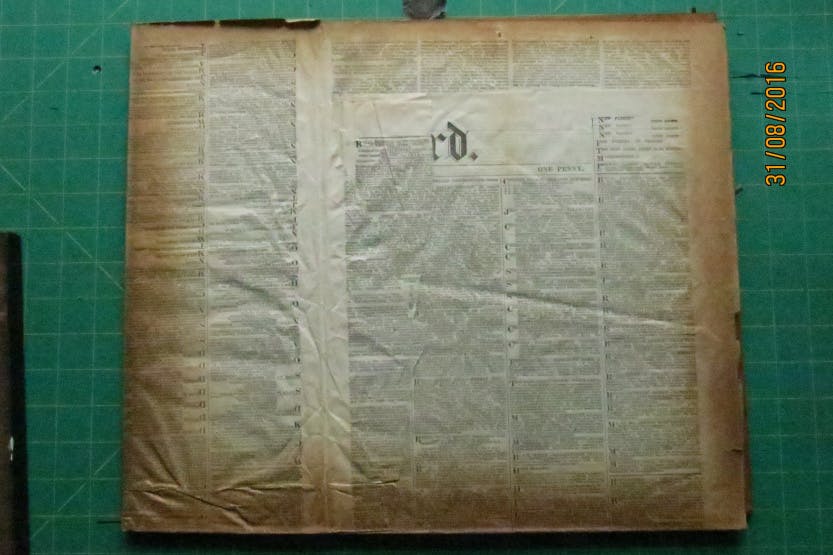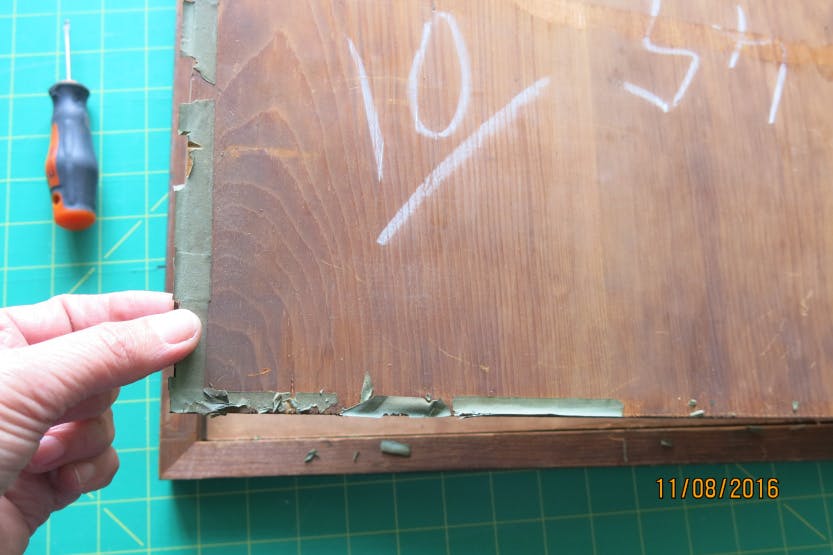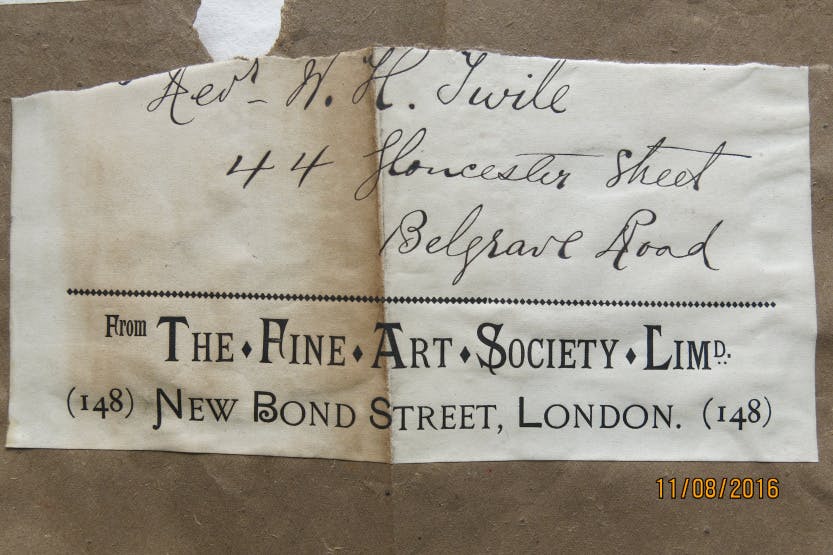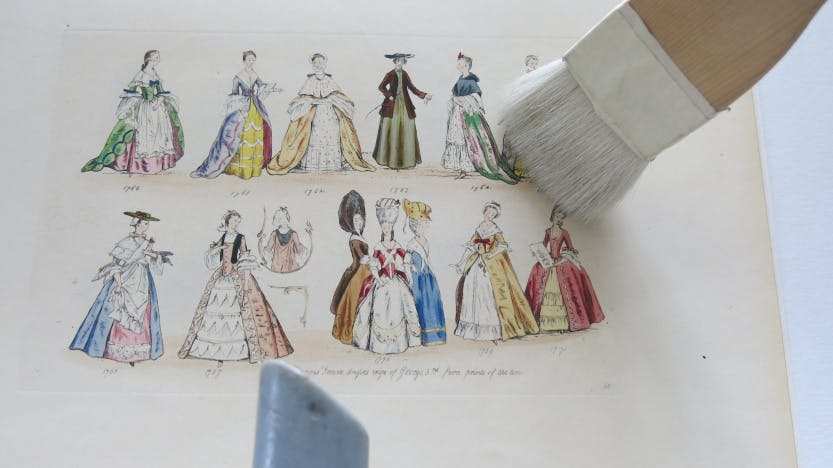Conservation and discoveries in our paper collections
Date: 06 February 2020
Author:
Laurie Gibbs
We have around 25,000 works of art on paper in Historic Royal Palaces' collection. While many are on display, the vast majority are held in storage. These are delicate items and it's essential to conserve and store them correctly in order to preserve them for posterity.
About ten years ago, we had a survey done of our collection of prints and etchings which were mostly framed and we found that many of them were deteriorating due to the frames themselves, so we started a project of first aid which would bring the prints to a stable place. The project took two years to complete and was finished in the summer of 2019.
Many of our frames are made of acidic materials such as oak which over the years can transfer to the print making it go yellow or in extreme cases orange, like the poor chap above.
Other common problems with frames are: damage to the tape at the back which is mean to keep dust and small insects out, water damage and rusting nails, all of which can transfer to the print.
Our curators decided that in many instances the frames were of no particular value but the prints were, so in order to stop the damage we started with the removal of the frames.
Removing the frame is a straightforward job, often old newspapers are found to make a sort of lining between the print and frame. On the pictures below you can clearly see the mark left by the oak frame, yellowing the paper.
This paper is The Standard from 1891; this page is all about ships leaving Britain for the colonies and their timetables; you could go to Australia and New Zealand for £14 and 14 shillings!
Sometimes the labels on the frame are interesting, in which case we would keep them with the print. For instance, this label was found attached to a frame for a print of Lion Gate. It's interesting that the Fine Art Society has been at 148 New Bond street since 1876 and is still there.
Once out of their frame, the prints are cleaned and checked for damage. Once stored in a polyester pocket, they can be safely kept without further damage for years. Removing the frame of an old print is often beneficial to the print itself. The picture can be cleaned of dust, mould and insects. It is easier to check the condition, and even if the frame needs to be kept, the print can go back isolated from the oak frame, which after 100 years causes yellowing. Newspapers are often interesting but are better replaced with acid-free backing which will keep the print or watercolour in good condition for years to come.
Laurie Gibbs
Preventative Conservator
More from our blog

Conservation of an 18th century headboard: Secrets of a State Bed
13 March 2020
As part of our Secrets of a State Bed series, Conservator Viola Nicastro explains the process of conserving the headboard of Queen Caroline's State Bed, and reveals more of its secrets.

Caring for the Tower of London through lockdown
11 May 2021
While the Tower of London was closed to the public during the Covid-19 pandemic, much work was underway to protect the fabric of the building and the future of the palace. Assistant Curator Alfred Hawkins reveals one of the important projects that he has been working on behind the scenes.

Secrets of Henry VIII's Whitehall: The Archaeology of a Lost Palace
17 August 2023
More than 300 years after the destruction of Whitehall Palace by fire, archaeological excavation and scientific analysis continue to uncover the lost stories and secrets of Henry VIII's once elaborate home.



